Wales is a country filled with some of the most awe-inspiring views in all of the United Kingdom.
From the beautiful bucolic countryside to the stunning coastline, Wales is a country that holds its own with some of the most picturesque scenes in Western Europe. But nothing draws the eye quite like a castle.
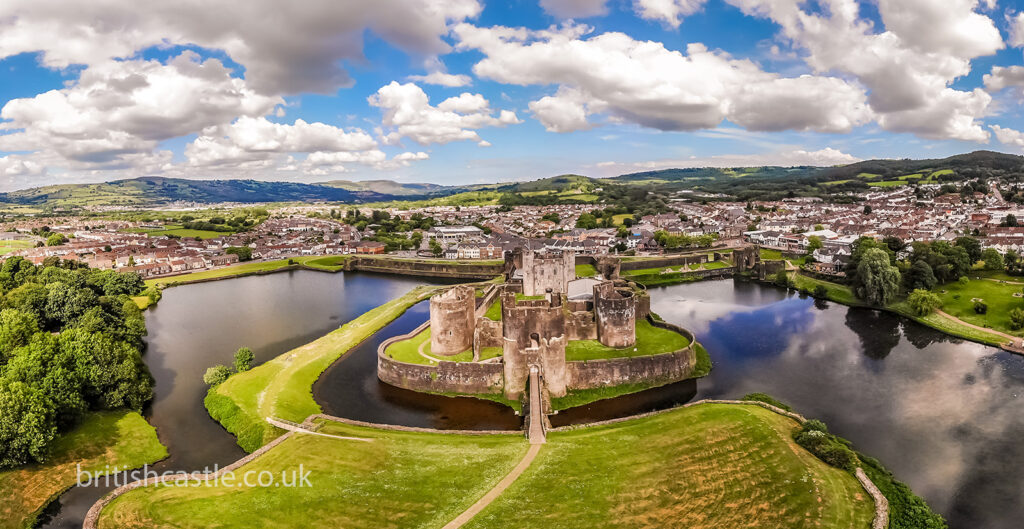
Wales is home to some of the grandest and most beautiful castles in all of the UK, and Caerphilly Castle, the biggest castle in Wales, is no exception.
In this guide, we’ll take a closer look at the history and features of Caerphilly Castle, the largest castle in Wales.
When Was Caerphilly Castle Built?
Caerphilly Castle is a medieval fortress located in South Wales, just outside of Cardiff.
The castle was built by Gilbert de Clare, the 7th Earl of Gloucester, also known as the Red Earl, during the 13th century, as part of a system of fortifications to defend the Welsh Marches from the native Welsh rulers.
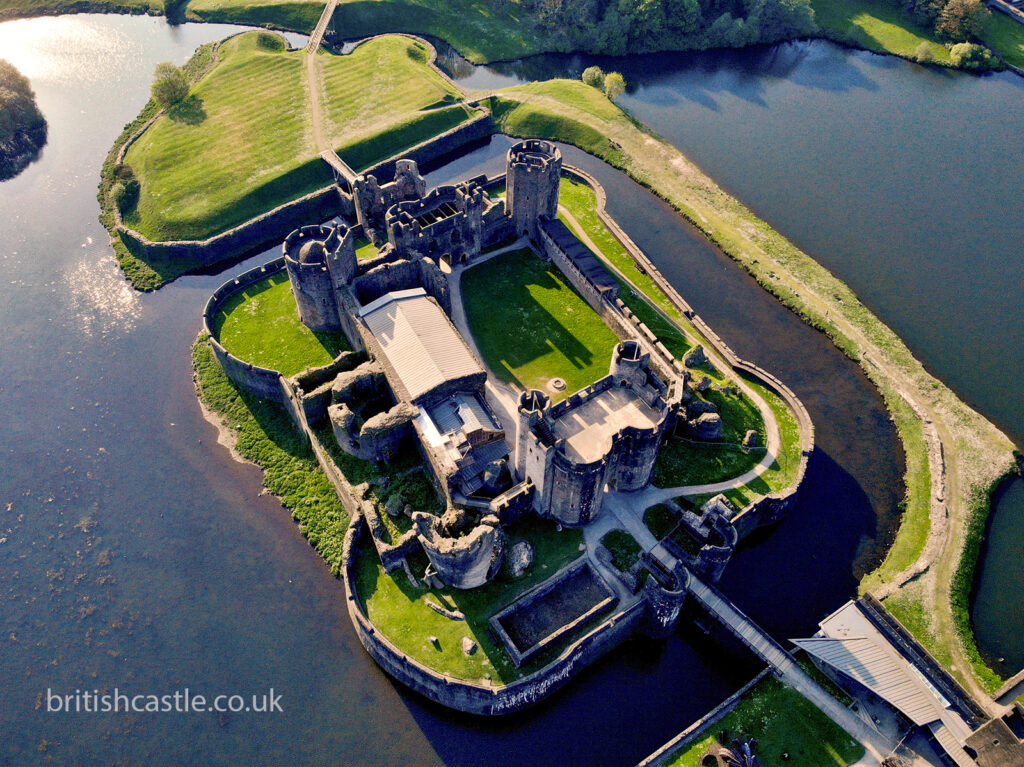
The castle was initially built on marshy ground, surrounded by a large artificial lake, and protected by an impressive system of concentric walls and square towers.
The primary aim of Caerphilly Castle was to solidify Gilbert de Clare’s control over the county borough of Glamorgan, an area hotly disputed by the Red Earl, his descendants, and the native Welsh Llywelyn the Last.
A revolutionary masterpiece of military planning, Caerphilly Castle is regarded as one of the best concentric fortification designs in Europe and one of the first castles to incorporate a water-filled moat as part of its defence system.
Anglo-Norman Expansion Into South Wales
The pressing need for a castle in the Caerphilly area stems from the Anglo-Norman expansion into South Wales in the latter part of the 12th century. During this period, castles were built along an arc stretching from Pembroke to Cardigan Bay, with Caerphilly Castle at its apex.
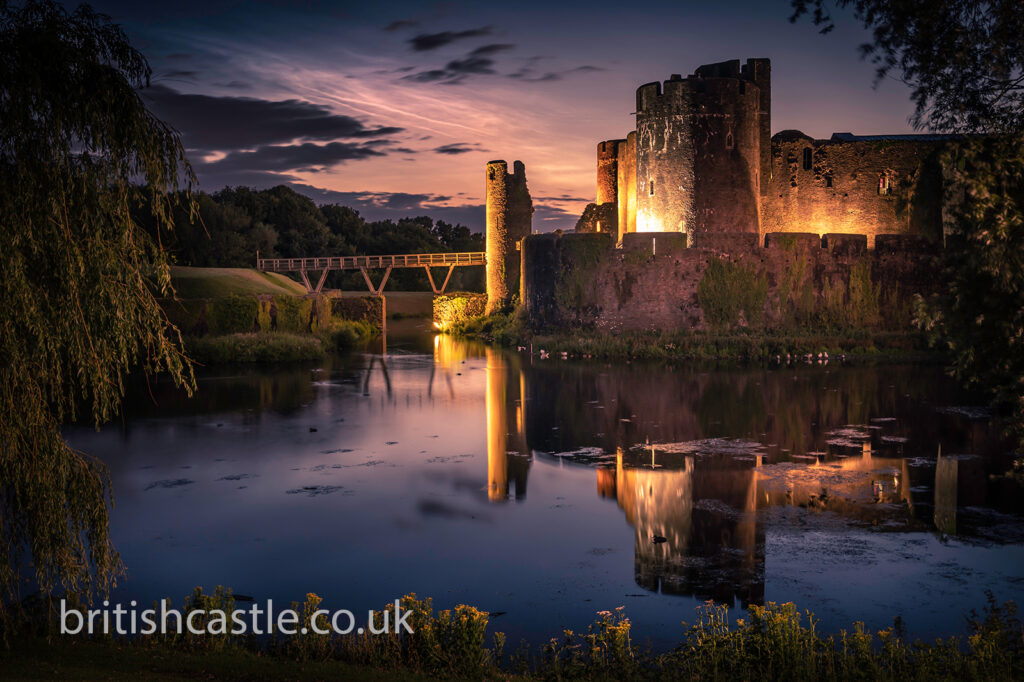
Gilbert de Clare’s castle was intended to check and contain the activities of Welsh Prince Llywelyn the Last while also maintaining the power of the Marcher Lordship in South Wales, which had been established by William Fitz Osbern and Roger Bigod.
The primary cause of tension at the time of Caerphilly Castle’s construction was the Baronial Revolt in England. Llywelyn the Las had allied himself with the barons and was in open conflict with King Henry III.
Red Gilbert, as Gilbert de Clare was known, was an ally of the King and a staunch opponent of Llywelyn. In order to secure his power over Glamorgan, he needed a castle strong enough to withstand the Welsh Prince’s forces.
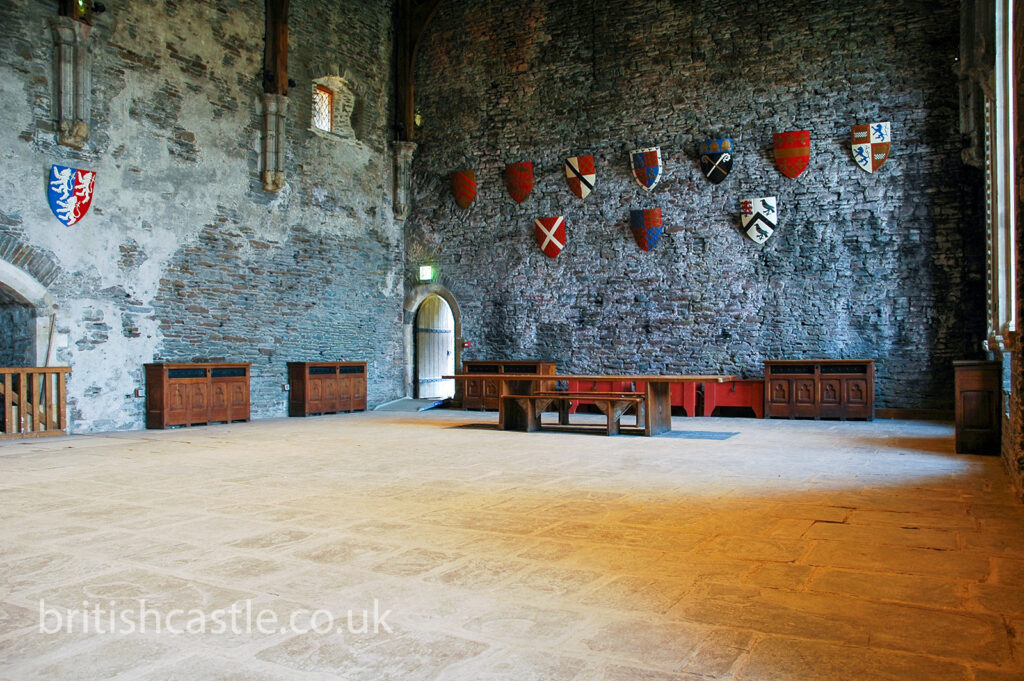
The Anglo-Normans brought with them a new style of castle building, one that saw castles built on key strategic sites to protect critical trade routes or roads.
Caerphilly Castle was just such a site: it was built to control the route to the interior of Glamorgan and prevent Welsh rebellion.
Situated in the basin of the Rhymney Valley, adjacent to a former Roman fort, Caerphilly Castle dominates the surrounding landscape. The river Rhymney also provides a natural defensive barrier to the east.
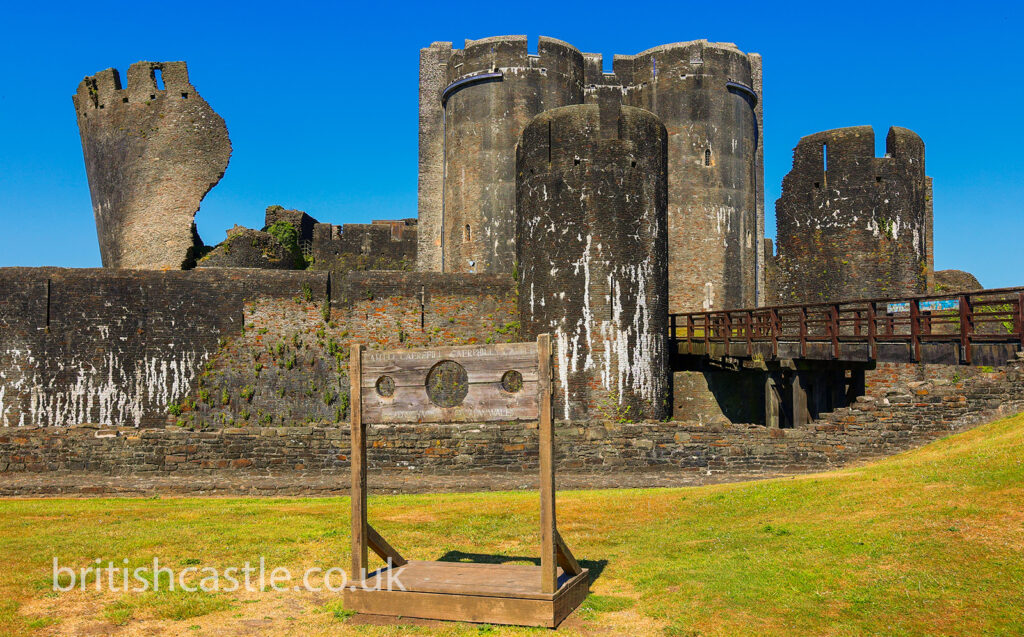
The site was carefully chosen for its strategic position, and it is likely that the artificial lake, or ‘moat’, was created as part of the defences. The lake would have been filled with water from the nearby river in order to make it difficult for attackers to cross.
This required the building of two huge dams to direct the water into the newly dug moats.
The design of the castle was said to have been inspired by Kenilworth Castle, which also utilised a range of water defences to significant effect. Gilbert de Clare campaigned around Kenilworth in the 1260s, and it is believed he drew inspiration from this castle when constructing Caerphilly.
The Cementing of English Rule
The invasion of 1277 by Edward I ousted Llywelyn and marked the end of Welsh independence.
The completion of Caerphilly Castle in 1271, orchestrated masterfully by Red Gilbert, was an integral part of Edward I’s subjugation of Wales. The castle served as a symbol of English rule in South Wales and acted as a base for further military campaigns against Welsh attacks.
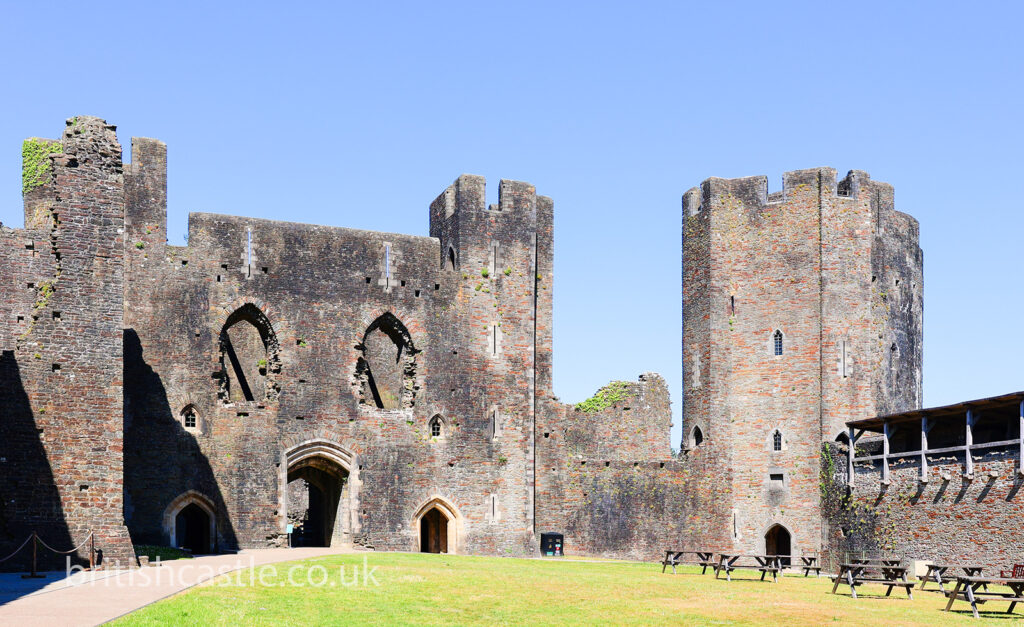
It should be noted just how quickly Caerphilly Castle was built, taking only three years to complete from start to finish.
This is a testament to the skill and engineering prowess of the workers and architects hired by Red Gilbert, who managed to build one of Britain’s largest and most impressive medieval fortresses in such a short time.
The cost of this endeavour was, perhaps unsurprisingly, huge. An estimated £19,000 at the time was spent on the construction and maintenance of Castle Caerphilly. To put that in context, a labourer working on the castle would have earned around £2 a year in the 13th century.
During the rebellion of Madog ap Llywelyn in 1294, the Welsh launched an invasion of Glamorgan, and the castle was besieged for several months.
The siege was eventually lifted after a force headed up by the Prince of Wales, Edward I, invaded North Wales, and Caerphilly Castle remained a crucial strategic stronghold, able to exert control over the surrounding countryside.
Further Rebellions and Sieges
On the death of Red Gilbert, his son, also called Gilbert, inherited the castle. Gilbert’s death in 1314 saw control of the castle pass from the de Clare family to royal officials.
The attacks by Llywelyn Bren, a local rebel leader, led to several sieges of Caerphilly Castle during the 14th century, with the castle acting as a critical defensive structure that enabled the English to maintain control over South Wales.
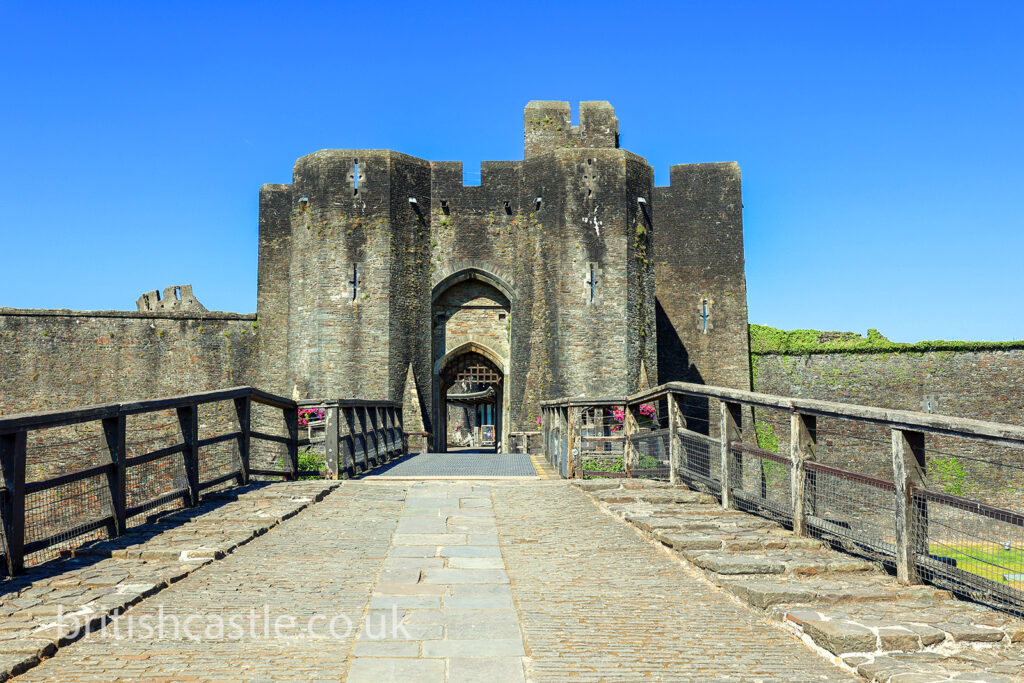
In 1317, control of Glamorgan and Caerphilly Castle was given to Eleanor de Clare, wife of Hugh le Despenser. Despenser had the great hall enlarged, and many of the internal buildings in the castle complex were redecorated.
In 1326 Edward’s wife, Isabella of France and her lover, Roger Mortimer, overthrew Edward II. Hugh le Despenser fled to Caerphilly Castle, where they were besieged for several months by William la Zouche before being forced to surrender.
The Welsh rose in rebellion again in 1400 with the outbreak of the Glyndŵr Rising, and this time the castle fell into Welsh hands
Renovation and Decline
In 1416, Caerphilly Castle passed into the hands of Isabel le Despenser and her second husband, Richard Beauchamp, the Earl of Warwick.
The pair undertook significant renovation work on the castle, including rebuilding the great hall and several towers and creating a hunting park.
Unfortunately, by the 15th century, Caerphilly Castle had fallen into disrepair as a result of neglect and a preference for Cardiff Castle.
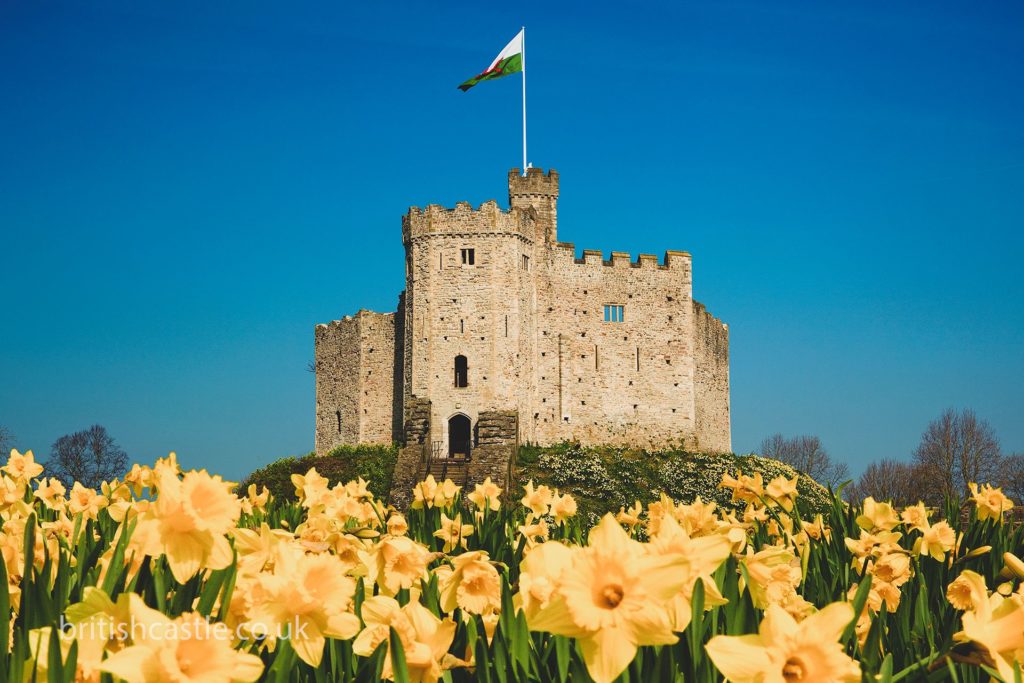
In 1583, the castle was leased to Thomas Lewis, who damaged it by stripping it of stone to extend his house.
The castle was garrisoned during the English Civil War but later deliberately ‘slighted’ or destroyed to prevent it from being used by royalist forces.
The Tenure of The Marquesses of Bute
In 1776, John Stuart, The Marquesses of Bute, acquired Caerphilly Castle and its associated estates. The Bute family were responsible for restoring the castle to its former glory, undertaking extensive works between 1868 and 1898.
Work on the castle continued until 1939 by the fourth Marquess, John Crichton-Stuart, repairing stonework that had been removed to create other buildings and landscaping the gardens and parkland surrounding the castle.
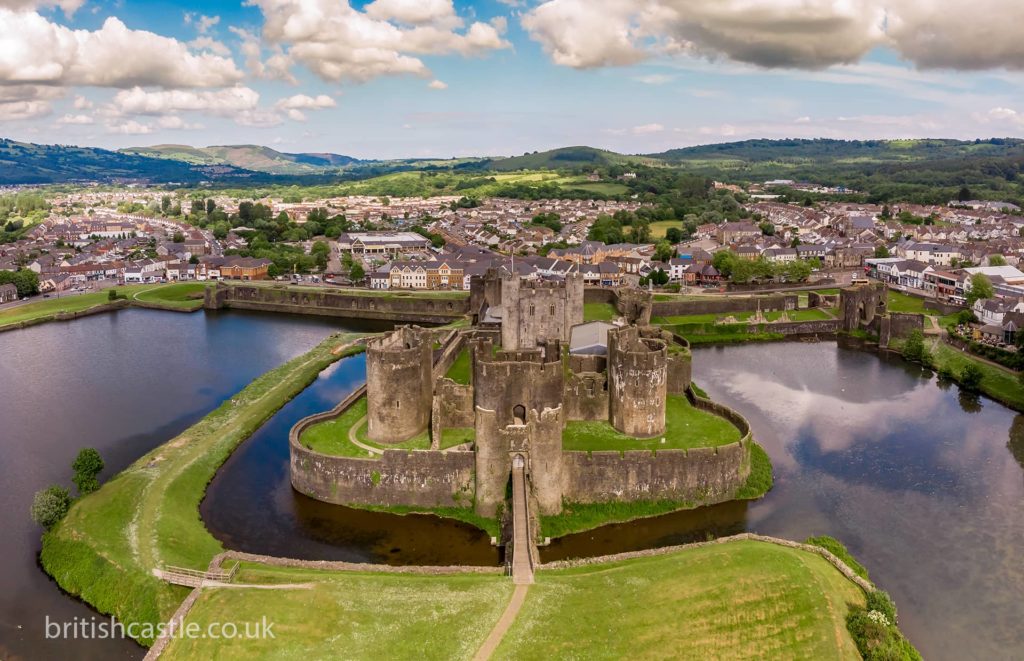
The Marquesses of Bute donated Caerphilly Castle to the state in 1950, after selling much of the family lands in Wales, and the building is now owned by the Welsh heritage agency Cadw. Restoration work has continued, and Caerphilly Castle is now a popular tourist destination, attracting more than 100,000 visitors each year.
The Architecture of Caerphilly Castle
The castle’s architectural prowess is its defining feature, and the remains of the castle are a testament to the impressive military engineering of 13th-century Britain.
An early example of the first concentric castle design, Caerphilly is surrounded by some of the more extensive water defences of any castle in Britain.
The scale of its construction is made all the more impressive by the fact that it was built on marshy ground, with an artificial lake and three great lakes surrounding it. The consultation was also done at breakneck speed and was completed in as little as three years!
The main castle is protected by two circuits of walls, with the outer wall having five castle towers and a drawbridge.
Within this lies an inner ward, which contains Caerphilly’s great hall, kitchens and private chambers.
This is surrounded by an additional concentric circuit of walls and three huge moated islands, which made it the second-largest castle in Britain at that time.
The Outer Ward
Caerphilly Castle’s outer ward is a curtain wall separated from the high curtain walls of the inner ward by only a narrow strip of land.
The large gatehouses, the west gatehouse/ inner west gatehouse and the east gatehouse/ inner east gatehouse control access to the inner ward. The outer main gatehouse is one of the most impressive features of the castle.
The south dam and north dam were used to protect the outer ward by creating a series of artificial lakes, the north lake and the south lake, that acted as moats to defend the west sides of the castle from a siege.
Three great towers defended the northern dam, while the southern dam was defended by Felton’s Tower, a large rectangular building built to protect the Castle’s mill and the sluice gates at the south dam platform.
The artificial island, known as the Hornwork, or central island, cemented the west end of the defences. The inner east gatehouse and outer east gatehouse was the main entrance, protected by twin D-shaped towers. These towers are situated on spurred, pyramidic bases, a design that is specific to the castle in South Wales.
The south gatehouse originally controlled access to the town through a drawbridge.
The Inner Ward
The inner ward, sometimes called the middle ward, is the heart of Caerphilly Castle and includes the great hall, chapel, kitchens and private chambers.
The entire area is protected by a high curtain wall that runs around its perimeter, with the corner towers providing additional defence.
One of the more famous towers is the south east tower, which tilts at an alarming 10-degree angle for a 15-meter-high stone building. The south east round tower’s lean is caused by subsidence, which has also impacted the south wall.
The north west side of the inner ward was once home to a substantial range of buildings, potentially including a blacksmith.
The inner ward also features a series of postern gates on the north side that lead into the outer ward or directly out onto the town beyond.
The Inner Bailey
Within the inner ward lies the inner bailey, which was used as a parade ground and for drills by troops stationed at Caerphilly Castle. The inner bailey is surrounded by a wall that stands eight metres high and is topped with battlements and turrets.
It also features the Gatehouse Tower, which was used as a prison during the castle’s heyday and now houses a museum of medieval history.
At the centre of this area lies the great hall, where guests were received and where the lord of the castle could retire for private entertainment. The great hall also served as a courtroom for settling disputes between tenants.
How Did The Defences Work?
As mentioned, Caerphilly Castle is an excellent example of concentric castle design. Its two circuits of walls, coupled with an extensive network of lakes, dams and towers, meant that the castle could be defended on all sides.
When the castle was besieged, lakes that surrounded the castle served as moats, preventing attackers from accessing the outer wall. The three substantial artificial islands – the Hornwork, East and Western Islands – added additional layers of defence.
Getting across these moats represented a significant challenge for any potential attackers, slowing any attempts to breach the outer wall and waterlogging equipment and armour, all the while under fire from the towers and battlements.
In addition to these defences, Caerphilly Castle also had an ingenious system of tunnels, wall walks and passages that allowed defenders to move around the castle without having to enter the open ground. This allowed for a more efficient defence as attackers could be met with unexpected resistance at any point.
Each of the gatehouses was equipped with towers that extended beyond the castle walls, allowing them to shoot down at attackers. The spiral stairs lead attackers counter-clockwise as they climb them, making it hard to use a shield to protect themselves.
Muderholes were also used to great effect at Caerphilly Castle. These small holes, located near the entrance gates, allowed defenders to shoot arrows or pour boiling liquids onto those attempting to breach the castle walls.
If the attackers did manage to penetrate the outer ward, perhaps by forcing one of the gatehouses, they would then be funnelled into a narrow strip of land which separated the inner and outer ward.
Only a narrow strip separates the two walls, and this bottleneck was further protected by a series of towers, bastions and arrow slits – all designed to defend against an enemy onslaught.
Crammed into a tight space, attackers were vulnerable to a barrage of arrows and boiling oil from the castle’s defenders.
Caerphilly Castle is an impressive example of medieval military engineering that stands as a testament to its builders’ skill and ingenuity. Its scale and complexity remain unparalleled in Britain, making it one of the most significant surviving examples of a concentric castle in Europe.
Visiting Caerphilly Castle
Now under the care of Cadw, the Welsh Historic Monuments Agency, Caerphilly Castle is open to the public and can be explored all year round.
Visitors can take a guided tour of the site or explore on their own, admiring the imposing castle and learning about its past.
The castle also hosts a variety of events throughout the year, including re-enactments, markets and festivals.
For those wanting to stay overnight, there are also a number of options around Caerphilly Castle, such as camping and glamping sites, hotels and bed & breakfasts.
The castle is easily accessible by public transport, with bus stops nearby and train stations within a short distance, making it an ideal day out for families and groups of friends.
Caerphilly Castle is an awe-inspiring monument that offers a unique insight into medieval life and the people who lived in it. Its imposing architecture and complex defences remain as impressive today as they were when it was built over 700 years ago.